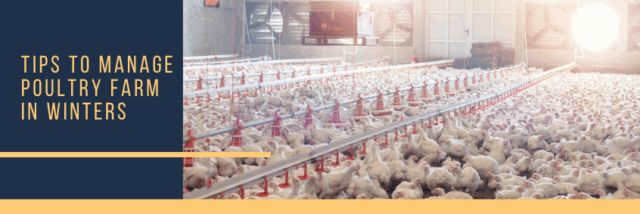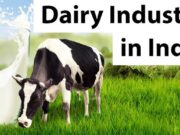
Winter Management in Poultry: A Crucial Aspect for Success
As the winter season sets in, it brings a unique set of challenges for poultry farmers. Maintaining optimal bird health, ensuring consistent egg production, and managing feed costs can become daunting tasks without proper planning. Effective winter management in poultry is not merely a necessity but a cornerstone of a successful poultry business. Here, we delve into various strategies and practical tips that can help poultry farmers navigate the winter months efficiently.
Understanding Winter Challenges in Poultry Farming
The cold weather can adversely affect poultry in multiple ways. Some common issues include:
- Decreased Egg Production: The shorter days and lower temperatures during winter can disrupt the laying cycles of hens, leading to reduced egg production.
- Feed Conversion Efficiency: Birds expend more energy to maintain body heat in colder temperatures, resulting in increased feed consumption and reduced feed conversion efficiency.
- Respiratory Issues: Poor ventilation in enclosed spaces can lead to the accumulation of ammonia and other harmful gases, increasing the risk of respiratory problems.
- Frostbite: Extremities such as combs, wattles, and toes are susceptible to frostbite in extremely cold conditions.
- Reduced Growth Rates: Chicks and broilers may experience stunted growth due to the additional energy required to combat cold stress.
Housing and Shelter Management
- Insulation: Ensure the poultry house is well-insulated to minimize heat loss. Use materials such as straw, wood shavings, or foam boards to line walls and ceilings.
- Ventilation: While keeping the house warm is important, maintaining adequate ventilation is equally crucial. Proper airflow prevents the buildup of ammonia and moisture without causing drafts.
- Draft Prevention: Inspect for gaps, cracks, or openings in the walls, doors, and windows. Seal these to prevent cold air from entering the poultry house.
- Lighting: The shorter daylight hours in winter can affect egg production. Supplement natural light with artificial lighting to provide 14-16 hours of light per day.
- Deep Litter System: Implementing a deep litter system helps generate heat through microbial activity. Maintain a depth of at least 6 inches and regularly turn the litter to keep it dry and aerated.
Temperature Regulation
Maintaining an optimal temperature in the poultry house is vital for bird health and productivity.
- Brooders: For chicks, use brooders or heating lamps to maintain a temperature of 90-95°F during the first week, gradually reducing it by 5°F each week.
- Heating Systems: Install space heaters or infrared heaters to provide warmth. Place these at strategic locations to ensure uniform heat distribution.
- Monitoring: Use thermometers to monitor temperature levels. Place them at bird height to get accurate readings.
Nutritional Adjustments
Cold weather increases birds’ energy requirements, necessitating adjustments in their diet:
- Higher Energy Feed: Include energy-dense ingredients such as corn, soybean meal, or animal fat to meet the birds’ increased caloric needs.
- Protein Levels: Ensure sufficient protein in the diet to support growth and egg production. Layer feed should contain at least 16-18% protein.
- Supplements: Provide vitamins and minerals, especially vitamin D, to counteract reduced sunlight exposure.
- Warm Water: Offer lukewarm water to prevent freezing and encourage water consumption. Ensure water is cleaned regularly and free of ice.
Disease Prevention
- Vaccination: Ensure birds are vaccinated against common winter diseases such as Newcastle disease and infectious bronchitis.
- Hygiene: Regularly clean and disinfect the poultry house, feeders, and drinkers to reduce pathogen load.
- Biosecurity: Limit access to the poultry house and implement strict biosecurity measures to prevent disease introduction.
- Ammonia Control: Use absorbent bedding materials and ensure proper ventilation to minimize ammonia levels.
Stress Management
Stress can weaken the immune system, making birds more susceptible to diseases. To reduce stress:
- Avoid Overcrowding: Provide sufficient space for birds to move freely and avoid stress from competition.
- Handle Gently: Limit handling and disturbances to minimize stress during feeding or inspection.
- Enrichment: Provide perches, dust baths, or other forms of environmental enrichment to keep birds engaged.
Frostbite Prevention
Frostbite is a common concern in freezing temperatures. To protect birds:
- Apply Petroleum Jelly: Coat combs, wattles, and toes with petroleum jelly or a similar substance to prevent frostbite.
- Elevate Roosts: Ensure roosting bars are above ground level to keep birds away from the cold floor.
- Foot Bath: Place a straw-covered mat or shallow foot bath with warm water near the entrance to prevent feet from freezing.
Emergency Preparedness
Unforeseen circumstances such as power outages or extreme weather can disrupt operations. Prepare in advance:
- Backup Power: Invest in a generator to ensure uninterrupted heating and lighting.
- Stockpile Supplies: Maintain a reserve of feed, bedding, and fuel for emergencies.
- Contingency Plan: Develop an action plan to address potential crises, including evacuations or alternative shelter arrangements.
Monitoring and Record-Keeping
- Daily Checks: Inspect birds daily for signs of illness, stress, or frostbite.
- Production Records: Track feed consumption, egg production, and mortality rates to identify trends and take corrective actions.
- Environmental Logs: Record temperature, humidity, and ammonia levels to ensure optimal conditions.
Winter management in poultry farming is a multifaceted challenge requiring careful planning and execution. By focusing on housing, nutrition, disease prevention, and stress reduction, farmers can safeguard their flocks from the adverse effects of cold weather. Moreover, adopting innovative practices such as the deep litter system or supplemental lighting can significantly enhance productivity and profitability. With the right approach, winter can be transformed from a season of struggle into an opportunity for success in poultry farming.



























